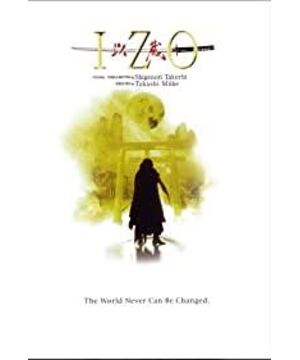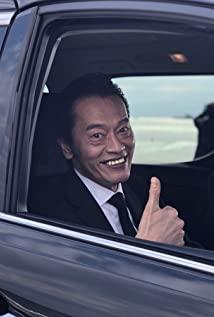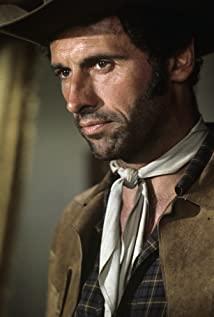This is a shocking Japanese film, first visually, and then spiritually.
At the beginning of the film, it is a very realistic scene of execution. IZO was bound to a cross, and the executioner used a long-bladed knife to stab him through his waist and abdomen, through his body, and out of his neck. The soul of IZO has been wandering in time and space ever since, seeing people kill people, meeting Buddhas and killing Buddhas. The entire 2-hour film is almost deduced in the killing scene after scene.
In the killing scenes, there are several scenes that left a deep impression on me:
·IZO fell from the water, passed through the wedding ceremony, killed the bride and groom and the guests, and once again fell into an elementary school classroom inside. IZO hears the inner drive: kill them. But he stumbled out of the classroom, avoiding killing the classroom children. He killed more than a dozen female teachers in the hallway of the classroom; the female teacher in the classroom was questioning the pupils. "What is love?" "What is democracy?" "What is a country?" The children's answers were full of questions and retorts, "Democracy is an illusory illusion," and "A country is an illusion imagined by human beings." After class, the female teacher walked slowly through the corridor full of bloody corpses. IZO respectfully stood on her side and saluted the female teacher who passed by.
·IZO falls into the narrow streets of the 1930s, and he sees Aya (a woman destined to be intertwined with his soul) bathing and dressing her man - IZO herself. He saw himself put on a neat military uniform, and Aya said to IZO: For the sake of the country, you have to work hard. This section is full of contradictions and confusion with the previous section. Maybe it's the director's own confusion.
· Musicians. There is also a musician who has been following IZO. The musician embraced his guitar and played and sang ballads full of questioning. (It's very Cui Jian's style, especially the hoarse voice). One of the ballads is in a field full of daisies. The ballad encourages people to despise and laugh at IZO, while IZO looks around blankly in the field of flowers. Sometimes, the musician also encouraged IZO to kill the nobles.
·A modern, well-dressed white-collar young man in the business world kneels in front of IZO, hoping to exchange IZO for not killing him. IZO did not hesitate to kill those white-collar young people in the business world.
·IZO encountered a fat black monk in a Japanese-style room with paper walls. IZO was no match for the black monk. But IZO can't be killed. The monk who stabbed into IZO's key point first was split into two pieces by IZO. After that, in one room after another, IZO encountered countless sleepwalking souls of the Japanese soldiers of World War II, and they filled room after room. (This reminds me of the Yasukuni Shrine)
·IZO finally stumbled upon the noble politicians who manipulated and stopped IZO (one of them was played by Takeshi Kitano), seeing IZO breaking into the labyrinth-like room, the nobles were terrified, they Trying to trade money, power, honor, titles of nobility, and even honorary doctorates in exchange for IZO's no-kill. That's not what IZO wanted, he killed all the noble politicians.
The final scene of IZO is to come to the Emperor's room. The archer and the knivesman couldn't stop IZO's footsteps at close range. He had arrows in his body and eyes, and a knives in his chin. He threw out his sword. different. After the head of the female flying knife fell off the Tata rice, countless little butterflies flew out from the broken neck. Step by step IZO approached the young Emperor who was standing high on the stairs. The Emperor just blew a breath, and IZO, who couldn't be killed, fell down the stairs.
・IZO finally delivered from Aya's birth canal. A baby with dirty blood and an umbilical cord. This echoes the animation in the opening sequence where sperm is produced from the scrotum, ejected from the penis, and then swims in the vagina.
There are many scenes of World War II flashed back in the film's opening and in the film: Stalin speaking, Hitler participating in activities, American soldiers, Japanese women cheering for the victory of the Japanese army, juvenile troops marching, and scenes of the Pacific War.
The film is full of visually stunning killing scenes, but IZO is a lonely night ghost who can't find his home. He can't stop killing, but he falls into pain and despair after the killing. The aristocratic politicians who manipulated him came from different time and space: from the 19th century swordsman, and the modern street bewitching boy, as well as the police, special forces, and the undead of the World War II Japanese army who became wandering spirits, they were unable to stop or kill IZO.
The director of IZO is Takashi Miike, who is known as the head of the Japanese violent faction. With the achievements of this film, it will take at least another 25 years for China's increasingly nanny-like directors to achieve the performance level of Miike Tsongshi.
Ye Yu, the danger is so high!
View more about Izo reviews









